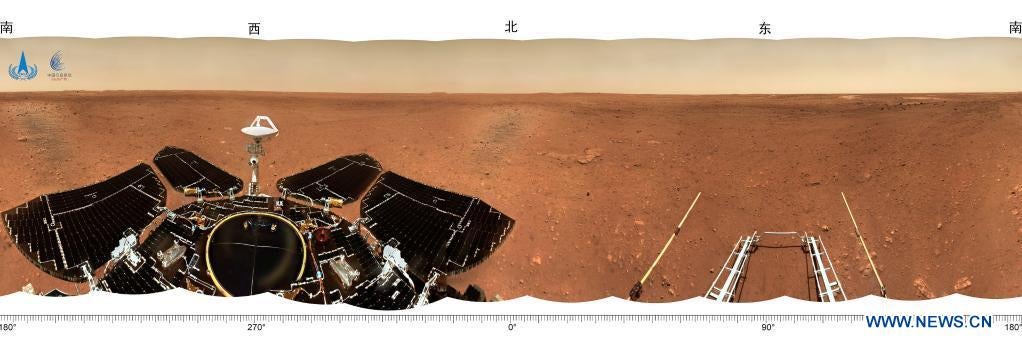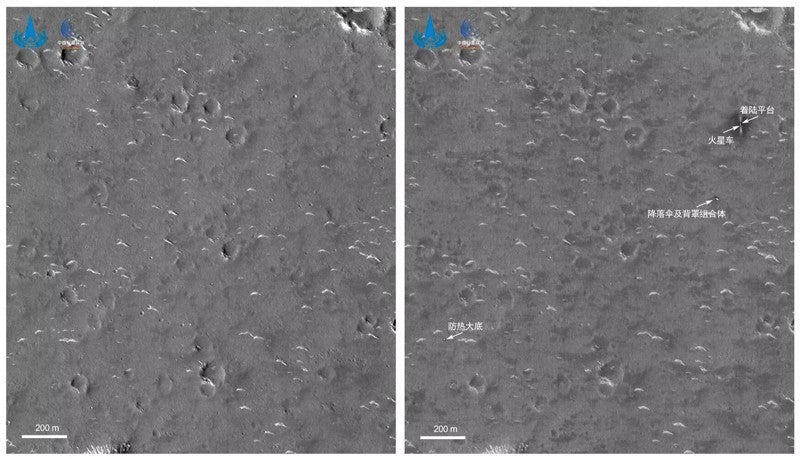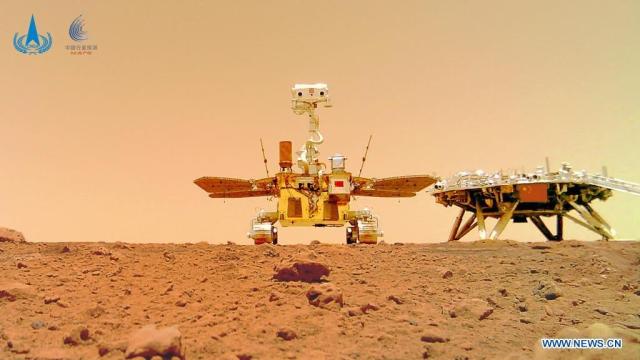The Zhurong rover, whose name translates to “fire god,” used a detachable wireless camera to capture a clever image of itself and its landing platform on the surface of Mars.
It’s small in comparison to NASA’s Curiosity and Perseverance rovers, but the six-wheeled Zhurong is a major deal for China, as it’s the country’s first mission to explore the Red Planet. The China National Space Administration unveiled a batch of images today in celebration of the mission, as the state-run Xinhua reports.
The 240-kilogram rover landed on May 14, and drove off the landing platform on May 22. Zhurong is exploring Utopia Planitia — a plain last visited by NASA’s Viking Lander 2 in 1976.
To create the selfie, the rover placed a wireless camera on the dusty surface, backed away nearly 10 metres, and struck a pose, as Nature reports. The image shows Zhurong with its masthead proudly extended, along with the rocket-powered platform that brought the rover to the surface. Chinese flags can be seen on both vehicles.


Other images include a 360-degree panoramic view of the landing site, a shot of the landing platform in isolation (along with wheel tracks at the base of the extended ramp), and an unobstructed image showing Zhurong’s current environment.

Zhurong’s mission is expected to last for 90 sols, or Martian days, during which time it will track weather, study geology, and perform other duties as a remote planetary scientist. The rover has a laser tool for analysing rocks and radar for sniffing out subsurface water-ice. Interesting features of Utopia Planitia include sand dune-like structures, potential frost, and the remnant of an old lava or mud volcano.

Earlier this week, China’s space agency released new images of Mars taken by its Tianwen-1 probe. A hi-res image taken on June 2 shows Zhurong and the landing platform on the surface, along with a dark splotch caused by the lander’s retro-rockets. The Tianwen-1 orbiter, which launched together with Zhurong on July 23, 2020, will spend a full Martian year, or 687 Earth days, relaying communications to the rover and conducting its own scientific work.
Zhurong is one of three rovers currently working on the Red Planet, the others being NASA’s Curiosity and Perseverance (NASA’s InSight probe is also active on Mars, but it’s immobile). With Perseverance’s commissioning phase now complete, the rover is ready to embark on its first scientific expedition. Mars has quite suddenly become a very busy place, which is amazing.
